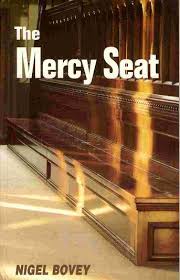Kids sometimes climb on it, run across it, sit on it, stand on it, while adults use it to set up sound equipment and seasonal decorations, to hold the offering plates, and on certain occasions place flowers. I’m pretty sure most, if not all corps have at least one of these. When I was a kid our hall had two. Oh yes, back then, if you valued your life - you never did any of those things listed above. It was a “no fly” zone and heedless kids could suffer minor corporal punishment for any of these, then unacceptable, infractions! I’m not sure what happened to adults who broke the law but I can easily picture the Bandmaster’s mother clipping his ears if he ever used it to sort music! Of course if the HLS caught you - “To the moon Alice, to the moon!”
For the most part these furnishings were simple in construction, rather plain in appearance, and in so far as it was possible, kept clean and dust free.
I did hear a story once of a corps that did not have one of these units and so used a makeshift substitute. The new Lieutenant was having none of that and so she conscripted two men from the congregation to remedy the problem. Now these men were either non-converts or backsliders at the time, I’m not sure which, but on the day of completion and installation the Lieutenant just happened to walk in on them as they finished their work. Both men were on their knees in the sanctuary in front of (below) the pulpit, admiring their work, while making final adjustments. Unable to resist, the young officer said something like this “Now this is a wonderful sight this morning gentlemen. It does my heart good to see you both kneeling and what a wonderful job you’ve done. It would be such a blessing to have you kneel here again on the day of its dedication. Yes, the first two converts at our brand new Mercy Seat!”
In 1951 The Campfield Press, in St. Albans, Great Britain first published a booklet entitled THE MERCY SEAT by Senior-Captain W. B. Burrows for the Salvationist Publishing and Supply, Ltd. Chapter One, entitled THE GLORY OF THE MERCY SEAT opens with:
“FORMS without backs may be kept close to the platform, simply pulled out, and the Mercy Seat is ready” With such simplicity did the first ORDERS AND REGULATIONS FOR FIELD OFFICERS, published in 1886, describe that which has become the Army’s principal method of bring men home to God.
To that severely practical view of the Mercy Seat the Army has been true throughout the years. The Mercy Seat is not limited to any particular place nor specific time.
Burrows then quotes from Commissioner Brengle, whom he describes as “noted teacher of holiness and as mighty at the Penitent-form as on the platform”
“Unable to get anyone to the Penitent-form in the meeting, I finally got a man on his knees at the door just as he was going out. So I suggested that we move the Penitent-form to the other end of the hall, which was done, the soldiers flocking down en masse.
When that man got through, we turned our attention to a backslider in the rear, and soon the new convert and the rest of us were down around him – and he got through. Then a young lad near the door gave in and he got saved.
Finally, there was only one unsaved person left in the hall, the backslidden wife of the Sergeant-Major. We all turned our attention to her and soon she was down on her knees in the middle of the hall, converted. It was a blessed time. It is most interesting to turn the whole hall into a Penitent-form.” {from SAMUEL LOGAN BRENGLE, by Clarence Hall}
Who remembers meetings like that and that type of language used to describe what unfolded?
Would it surprise you to know that they are still happening in our Army world?
Hallelujah!
In 1996 The Salvation Army published yet another book with this same title THE MERCY SEAT as written by Captain Nigel Bovey. On the back cover we read first of all a quote from General Paul A. Rader:
“We call people to faith in Jesus Christ with the expectation that at the mercy seat they can be helped to repent and believe the gospel and that there, through the regenerating agency of the Spirt, they can stand up newborn in Christ”
This is followed by:
Right from the start the mercy seat, or penitent form, has been the climax of The Salvation Army’s battle for souls. Millions of people have been converted at an Army mercy seat. Millions more have had their spiritual experience enriched by kneeling at this simple wooden bench…”
“Mercy Seat”
“Penitent Form”
“Mourner’s Bench”
“Altar”
“Bench”
“Chair”
I could go on with the names of objects used as Mercy Seats as essentially any place one takes time to commune with God in essence becomes a Mercy Seat. In THE HISTORY OF THE SALVATION ARMY, Vol. II (p.135) the following is quoted:
“The Salvation Army’s viewpoint has been well expressed by Cowper’s verse;
Jesus, where’er Thy people meet
There they behold Thy mercy-seat;
Where’er they seek Thee, Thou art found,
And every place is hallowed ground!
Do you remember where you first knelt?
There is so much more to be said…later.
The pictures of the Mercy Seat that follow were taken recently at our Museum at THQ. We are excited to add to our collection, the Mercy Seat, thoughtfully salvaged from the College for Officers, 2150 Bayview Avenue.







Leave a Comment